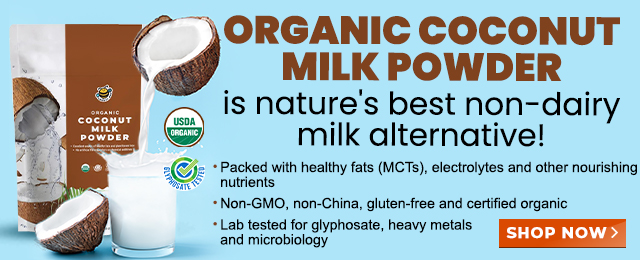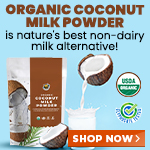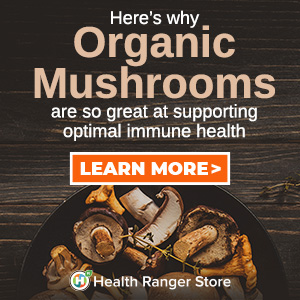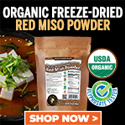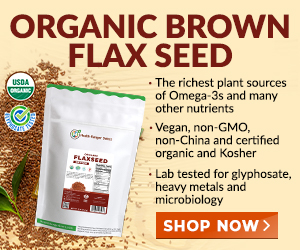
Beware of the Dangers of Soy
Friday, October 30, 2009 by: Ethan Huff
Tags: soy, health news, Natural News
- Newly released JFK files reveal Pentagon's role in creating Lyme disease and covid in the same lab
- Here are TEN all-natural ways to protect your garden without using harmful chemicals
- Ginseng's hidden anti-aging power: How compound K is rewriting the rules of skincare
- “Endgame: The Hidden Agenda 21” unveils a world of conspiracy and control
- L.A.'s rebuilding nightmare: Only 4 permits issued after fire destroys 6,000 homes
- Scientists demand FDA withdraw mRNA COVID vaccines amid contamination and gene therapy concerns
- Senate Democrats deny censorship industrial complex existed, defend government's role in silencing dissent
- “The shame of Minnesota”: Somali immigrants behind $250 million child nutrition fraud in largest COVID-era scam
- Former Congresswoman exposes CCP's deep infiltration of California through universities, ports, and fentanyl
- Dr. Suzanne Humphries makes bombshell appearance on Joe Rogan podcast, exposing vaccine industry deception back to POLIOMYELITIS
- Despite surge in MMR vaccination in Texas, measles outbreaks continue: Is VACCINE SHEDDING fueling the spread?
- PROCESSED TABLE SALT in foods found to fuel depression
- Chewing gum's dirty secret: How your daily habit could be flooding your body with microplastics
- BPA: The hidden hormone disruptor sabotaging your health - and how to fight back
- “Independent” anti-Russia outlet MEDUZA faces COLLAPSE as US funding dries up
- Embracing the wild: A deep dive into Jim Cobb’s “Backwoods Survival Guide”
- The hidden battle in your glass: How A1 and A2 milk could shape your health
- Nomi Prins reveals how central bankers reshaped the global economy in “Collusion”
- Newly released JFK files reveal Pentagon's role in creating Lyme disease and covid in the same lab
- Analysis: The coming economic collapse, a mass uprising and Trump's three secret weapons to halt the growing revolt
- Festive flavors: The sweet history, nutritional profile and health benefits of pecan pie
- Elon Musk: Aliens could be here on Earth RIGHT NOW
- Trump reverses course on Gaza plan, says “nobody is expelling Palestinians”
- Big Pharma's $8 Billion bribery scheme exposed: how doctors are pushed to prescribe junk science, not heal
- Boys are back in town: Trump’s patriotic alpha crew takes the wheel while toxic females ride in the backseat
- Reclaim your health: How midlife exercise reverses years of inactivity
- A lack of integrity in Academia: Harvard professor found GUILTY of fraudulent research to promote CRT theory
- Survival 101: Effective EMF blocking techniques
- EPA advisor admits the agency is funneling billions to climate groups ahead of Trump’s return to White House
- Dr. Mike Yeadon releases 15-minute testimony - WATCH - about genocidal intent of COVID “vaccines”
- 5 Simple steps to boost your brainpower: How to strengthen executive function in a distracted world
- Florida takes a stand: DeSantis proposes permanent ban on mRNA vaccine mandates
- Sugarcane extract superior to cholesterol-lowering drugs?
- Mike Adams Sermon 66: God will DESTROY ISRAEL for its wickedness
- Pilots report mysterious lights 'moving at extreme speeds' across Oregon skies
- Space war brewing? Russia threatens to destroy Starlink satellites
- EPA advisor admits the agency is funneling billions to climate groups ahead of Trump’s return to White House
- California's social media censorship law struck down: A victory for free speech or a threat to online safety?
- The Health Ranger releases “Vaccine Zombie” song and music video, using AI-animated zombies for the music video
- Dr. Mike Yeadon releases 15-minute testimony - WATCH - about genocidal intent of COVID “vaccines”
- The pandemic as a tool for INDOCTRINATION: Understanding “The Indoctrinated Brain” by Dr. Michael Nehls
- Newly released JFK files reveal Pentagon's role in creating Lyme disease and covid in the same lab
- Florida takes a stand: DeSantis proposes permanent ban on mRNA vaccine mandates
- Mike Adams releases country western hit single: Goin’ Back in Time is Comin’ Home
- Mike Adams releases music poetry sensation: A Child of God
- “Why we influenced the 2020 elections”: Facebook files reveal the coordinated effort to bury the Hunter Biden laptop story
- Unpacking the Lies That We’ve Been Fed – new song and music video released by Mike Adams, the Health Ranger
- RFK Jr. clears key hurdle: Sen. Susan Collins backs controversial HHS nominee, signaling a new era for health policy
- Mike Adams releases new song and music video: Nothing More Disgusting Than a Globalist
- Michigan sheriff announces criminal investigation into 2020 election crimes, Dominion Voting Systems
- Israeli soldiers accused of even more torture and abuse in the West Bank
- Migrants are taking advantage of recent hurricanes to scam residents and loot their homes
- House Intelligence Committee calls for the ARREST and PROSECUTION of Dr. Anthony Fauci
- Rep. Nancy Mace introduces bill to ban biological males from female facilities on federal property
- Red Cross issues warning to stop blood plasma donations from vaccinated people
- Scientists confirm: GENIUS brain function can be spontaneously unleashed in humans without any apparent cause
- EPA advisor admits the agency is funneling billions to climate groups ahead of Trump’s return to White House
- HYSSOP: What research reveals about the health benefits of this ancient holy herb
- Two containers with completed ballots fall out of truck in Florida
- Fully vaccinated about to see “tsunami” of illness and death, warns virologist
- Global leaders unite to clamp down on “misinformation” with UN-backed Cascais Declaration
- BREAKING: 2025 NDAA authorizes mandatory military draft of WOMEN across America… as Pentagon pursues global NUCLEAR war with both Russia and China at the same time
- Michael Yon warns of a ZIONIST TAKEOVER in Trump’s second administration
- BOMBSHELL: DNA testing kits are a SCAM to develop ethnic-specific bioweapons
- Ozempic and Wegovy weight loss drugs are injectable LIZARD VENOM PEPTIDES that may unleash a devastating wave of organ failure… side effects align with symptoms of SNAKE BITES
- Israeli soldiers accused of even more torture and abuse in the West Bank
- These 13 countries just signed an agreement to engineer a global FAMINE by destroying food supply
- NASA admits that climate change occurs because of changes in Earth’s solar orbit, and NOT because of SUVs and fossil fuels
- RFK Jr. clears key hurdle: Sen. Susan Collins backs controversial HHS nominee, signaling a new era for health policy
- Sermon 30: How Jesus reveals Caesar’s FAKE CURRENCY and FALSE AUTHORITY
- Coriander seeds: Ancient medicine backed by modern science
- Arizona officials claim Maricopa County needs 10-13 days to tabulate results of the election
The History of Soy
Historically, ancient farmers planted soybeans in order to infuse their soil with nutrients such as nitrogen; their food crops benefited from the enriched soil that the soy plants provided. Typically attributed with Asian diets, soy has always played a minor role in eastern fare and, when consumed, it is done so fermented from a whole bean.
The traditional Japanese diet, for instance, includes over 100 biologically-unique foods per week with soy products accounting for only a few items. In Pearl Buck's 1931 bestselling Pulitzer Prize-winning novel, The Good Earth, she writes of Wang Lung, a Chinese subsistence farmer who rises to power in pre-revolutionary China because of he and his wife's hard work and determination . Raised in China herself, Buck's story contains scant mention of soy consumption as part of the typical Chinese diet.
Ancient pictographs from the Chinese Chou Dynasty period also confirm that soy was traditionally not used as food but as a crop-rotating plant that served to replenish the planting soil with nutrients. Throughout the centuries, it gradually gained popularity in various fermented forms.
Only in recent decades has corporate soy production become commonplace, ushered in by gales of misinformation claiming it as a health food in all its processed forms. Even in Asian countries, 90% of soy consumption involves processed, unfermented soy products much like the ones consumed in America.
What's So Bad About Soy?
Soybeans naturally contain a host of anti-nutrients and toxins, including trypsin inhibitors, hemaglutinin, phytic acid, and phytoestrogens.
The potent trypsin inhibitors present in soy significantly curtail protein absorption, causing abdominal distress due to hampered absorption of crucial nutrients and amino acids. Animals fed diets that contained large amounts of trypsin inhibitors developed pancreatic problems including cancer.
Hemaglutinin is a substance that is responsible for causing red blood cells to clump together and form clots. Both trypsin inhibitors and hemaglutinin have been deemed "growth depressant substances" for their contributions in stunting essential bodily functions.
Phytic acid, or phytates, is another nutrient absorption inhibitor that deters the uptake of essential minerals such as calcium, magnesium, iron, and zinc. Present in the bran of seeds, phytic acid will offset the intake of nutrients by stopping their absorption within the intestinal track, leading to severe mineral deficiencies. Zinc, the "intelligence mineral", is the one most completely blocked by soy phytates. Soy has also been shown to have the highest phytic acid content of any other grain or legume ever studied.
Phytoestrogens are chemical compounds found in some plants that mimic the estrogen hormone. Soy products are particularly rich in isoflavone phytoestrogens which are capable of significantly disrupting human hormonal balance, particularly in men. A study conducted by Harvard University revealed a definitive correlation between soy consumption and low sperm counts in men, indicating that high soy consumption can instigate reproductive harm and suppress testosterone levels.
Genetic Engineering
To add insult to injury, the GMO Compass database records that as of 2008, 92% of soy crops in the U.S. are genetically modified varieties. GMOs are continually shown in independent studies to cause serious harm in the human body, a frightening prospect when considering that soy derivatives are found in virtually every processed food product.
One of the most prevalent culprits is soy lecithin, an emulsifier that is added to processed foods to stabilize the ingredients with one another. Soybean oil is another popular additive found in all kinds of foods from mayonnaise and salad dressings to cakes and breads. Besides the fact that they are soy-based and highly prevalent, these ingredients are most often derived from GMO soybeans.
Even organic products may contain GMO soy lecithin since this particular ingredient falls outside the realm of organic requirements, a controversial loophole that many have taken charge to have changed. Most organic products specify non-GMO soy lecithin but it is always important to investigate and verify.
Eat Soy Sparingly, and Only Organic
The proper way to eat soy is whole, organic, fermented, and sparingly. Soy milk, tofu, soy nuts, and other popular food items are essentially toxic due to the inherent toxic properties of unfermented soy. Many of these products are also highly processed and genetically-modified.
Soy formulas are inadequate and potentially dangerous for babies as they do not contain the vibrant array of vital nutrients found in the mother's breast milk. Many doctors affirm that soy formulas lack essential fatty acids (EFAs), cholesterol, immunoglobulins, and other nutrients necessary for proper cognitive and neural development in the child. As it turns out, many babies are allergic to the highly-processed proteins and ingredients in infant formula.
For adults, soy products like miso, tamari, and shoyu that have been properly fermented are not only delicious but healthy when used in various food preparations. Fermentation eliminates virtually all of the anti-nutrients and toxins present in raw soybeans. Tempeh is another whole fermented soy food that is high in protein and dietary fiber, making it a pertinent vegetarian meal option.
Small amounts of fermented, organic soy foods in conjunction with a diverse, whole foods diet will serve the body well. Rather than consume inordinate amounts of chemically-processed soy as is becoming typical in the American diet, particularly among vegetarians, soy should be shrouded among an array of complete food items - preferably as a condiment and always fermented.
Sources:
Deville, Nancy. Death by Supermarket: The Fattening, Dumbing Down, and Poisoning of America. Fort Lee, NJ: Barricade Books, 2007. 83-108.
The Ploy of Soy - The Weston A. Price Foundation
The Effects of Antenatal Exposure to Phytoestrogens on Human Male Reproductive and Urogenital Development - The Weston A. Price Foundation
Harvard study: Soy sinks sperm count - WorldNetDaily
Soybean - GMO Database
About the author
Ethan Huff is a freelance writer and health enthusiast who loves exploring the vast world of natural foods and health, digging deep to get to the truth. He runs an online health publication of his own at http://wholesomeherald.blogspot.com.Soy at FETCH.news
Get independent news alerts on natural cures, food lab tests, cannabis medicine, science, robotics, drones, privacy and more.
Take Action: Support Natural News by linking to this article from your website
Permalink to this article:
Embed article link: (copy HTML code below):
Reprinting this article:
Non-commercial use OK, cite NaturalNews.com with clickable link.
Follow Natural News on Facebook, Twitter, Google Plus, and Pinterest
Science News & Studies
Medicine News and Information
Food News & Studies
Health News & Studies
Herbs News & Information
Pollution News & Studies
Cancer News & Studies
Climate News & Studies
Survival News & Information
Gear News & Information
News covering technology, stocks, hackers, and more



"Big Tech and mainstream media are constantly trying to silence the independent voices that dare to bring you the truth about toxic food ingredients, dangerous medications and the failed, fraudulent science of the profit-driven medical establishment.
Email is one of the best ways to make sure you stay informed, without the censorship of the tech giants (Google, Apple, Facebook, Twitter, YouTube, etc.). Stay informed and you'll even likely learn information that may help save your own life."
–The Health Ranger, Mike Adams











